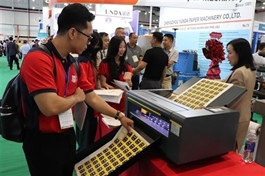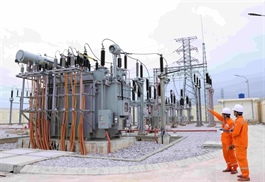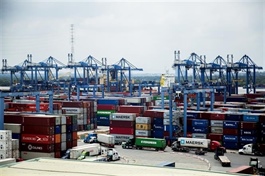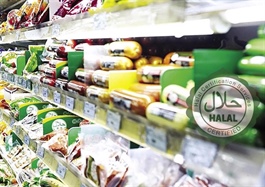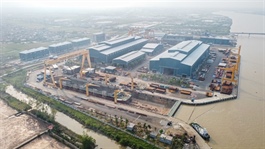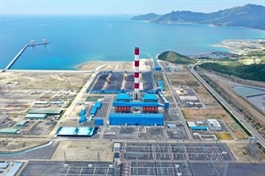Saigon Hi-Tech Park expands supply chain to tackle tariffs
Saigon Hi-Tech Park expands supply chain to tackle tariffs
Enterprises operating at the Saigon High-Tech Park are actively expanding supply chains and exploring new markets in response to potential tariffs on Vietnamese exports.
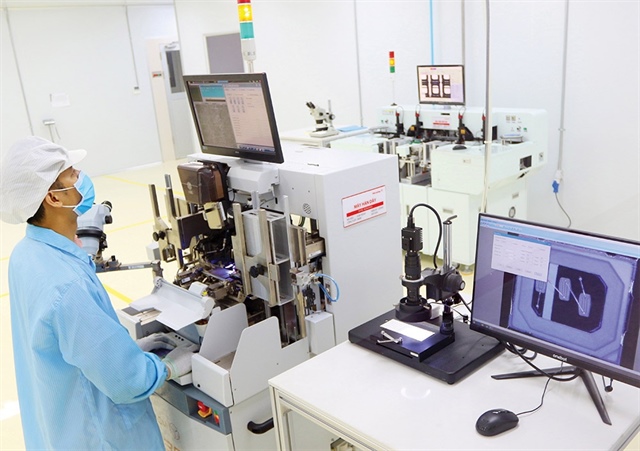
Some of the biggest names in tech have facilities at the Saigon High-Tech Park, photo Le Toan |
Speaking at a conference on the current US tariff situation held in Ho Chi Minh City on April 18, Nguyen Cong Han, director of semiconductor component firm FAB9, proposed a flexible distribution strategy to mitigate tariff-related risks. He suggested routing shipments through potential markets such as Singapore or Taiwan, instead of directly exporting to the United States.
“This strategy not only optimises logistics costs but also capitalises on the geographic and operational strengths of our existing branches. By using these distribution centres, FAB9 has so far avoided risks from potential new US tariff policies on Vietnam,” Han said.
FAB9 is a supplier of PCBs to the semiconductor industry and was established in 2003 in the US and entered Vietnam in 2007. The company now cooperates with many other manufacturers in SHTP to supply its products.
Although the company has not yet been directly affected, Han warned that if the US imposes tariffs as high as 46 per cent, customers demanding direct shipments to the US may face significantly higher costs, reducing FAB9’s price competitiveness by 20–30 per cent compared to rivals in countries like Thailand or Malaysia.
“This is not just a business challenge, but also an opportunity for us to rethink and adjust our distribution strategies to align with global market trends,” he said.
Han also called for the Vietnamese government to offer greater support for import-export businesses, while emphasising the importance of diversifying distribution channels and sourcing materials domestically to reduce import reliance and optimise costs.
“The most important factor right now is flexibility and creativity in business strategy. While current US policies may not significantly impact FAB9 or similar firms, we must prepare for future uncertainties. Proactively seeking solutions will help maintain market stability and drive long-term growth,” he said.
Resolution 98, issued in 2023, provides the pilot implementation of particular policies for the development of Ho Chi Minh City on investment management, state finance and budget, management of urban areas, and natural resources. It also covers management of science and technology, innovation, and the organisational apparatus of the governments of the Ho Chi Minh City and its Thu Duc city.
The Saigon High-Tech Park (SHTP) is earmarked for high technology enterprises such as Intel. It covers over 900 hectares in Thu Duc city, and high-tech investors in the complex are given preferential treatment in terms of land leases, taxation, and customs services.
As of April, the SHTP hosts over 160 active projects with a total registered capital exceeding $12 billion. Cumulative high-tech manufacturing output at the SHTP has reached over $170 billion, with exports exceeding $160 billion and imports surpassing $145 billion.
Assoc. Prof. Dr. Le Quoc Cuong, deputy head of the SHTP Management Authority, said the new US tariff policy is not merely a trade barrier, but a catalyst for global supply chain restructuring and geostrategic shifts across key industries. “In this context, Ho Chi Minh City – Vietnam’s economic and innovation hub – is facing a strategic moment to reposition itself within the Southeast Asian economic landscape,” he noted.
This requires a comprehensive restructuring of the city’s export-driven growth model, encouraging industrial transformation, safeguarding jobs, and enhancing economic resilience against external shocks. “It is also an opportunity to accelerate the transition to a greener, more digital, innovative, and self-reliant economy to restructure export markets and to raise product quality for global competitiveness,” Cuong said.
Seck Yee Chung, partner at Baker McKenzie Vietnam, believes that Vietnam is streamlining its administrative system to enhance governance efficiency. “We view these as well-calibrated steps by the government in realising its long-term vision and paving the way for Vietnam’s continued success,” Chung said. “We hope to see more supportive tax policies that will help position Vietnam as a premier destination,” he added.
Chung said that Vietnam must diversify and expand its export markets to maintain a balanced trade structure and avoid overdependence on any single country. “What’s also key is creating a more streamlined investment process so that enterprises operating in Vietnam can quickly move from investment to actual business operations, including selling their products in the market,” said Chung.
Victor Ngo, CEO of UOB, cited one of the most pressing challenges amid shifting trade dynamics as the impact on Vietnam’s labour force.
“The textile and footwear industries are expected to bear the brunt, followed closely by the electronics sector. However, a positive note is that only 18 per cent of Vietnam’s exports are currently destined for the US market,” said Ngo.
This presents an opportune moment for Vietnam to restructure its export strategy and expand into new markets. While Vietnam will continue to import US goods with a zero tariff, government support, such as tax incentives and policy adjustments, is essential to help businesses diversify their export portfolios.
“Market expansion is a long-term endeavour, but in the short term, financial support measures are urgently needed to help companies retain workers and maintain operational stability,” he added.
- 11:00 08/05/2025





